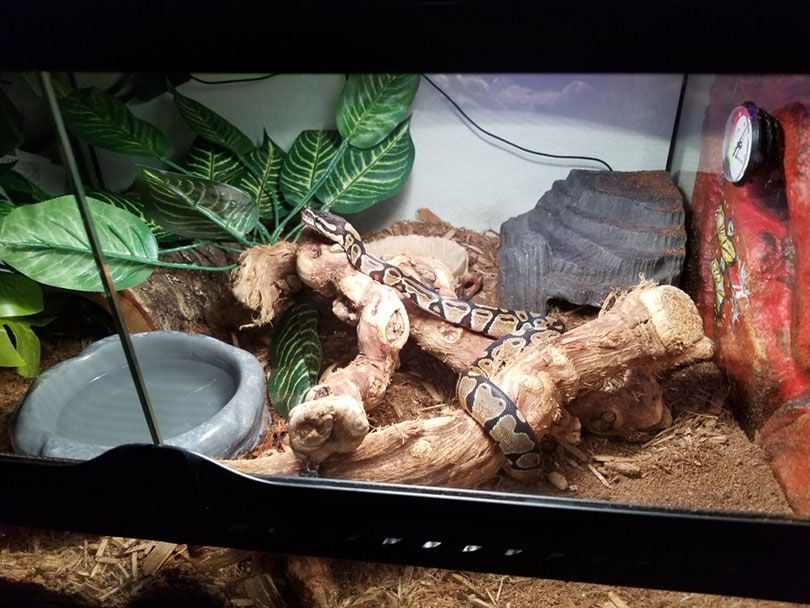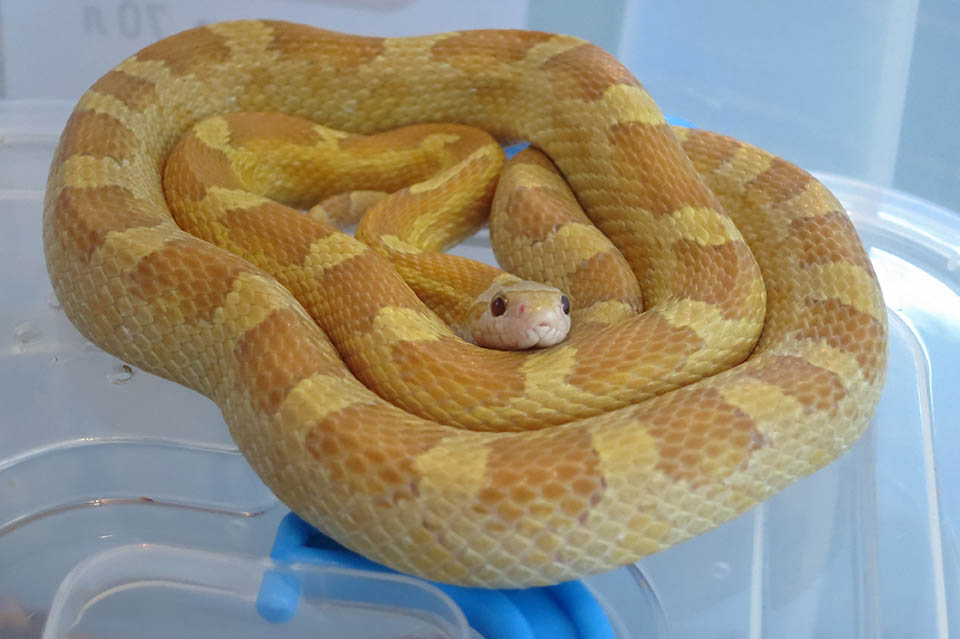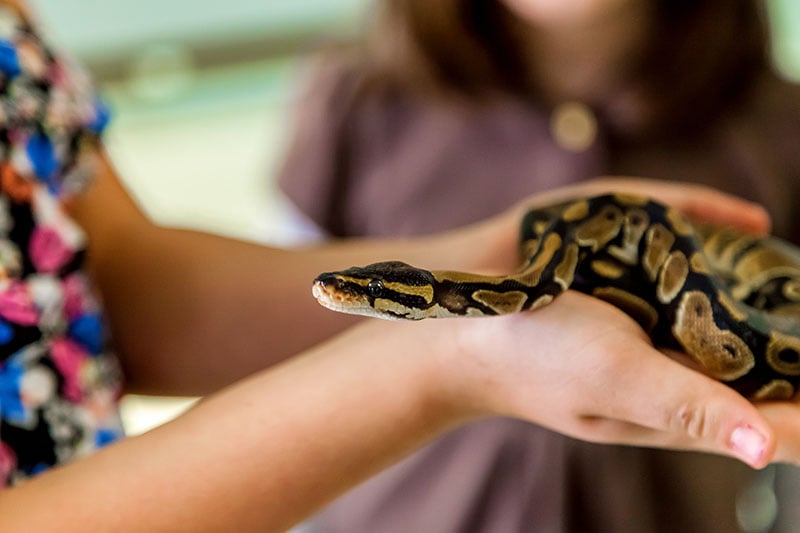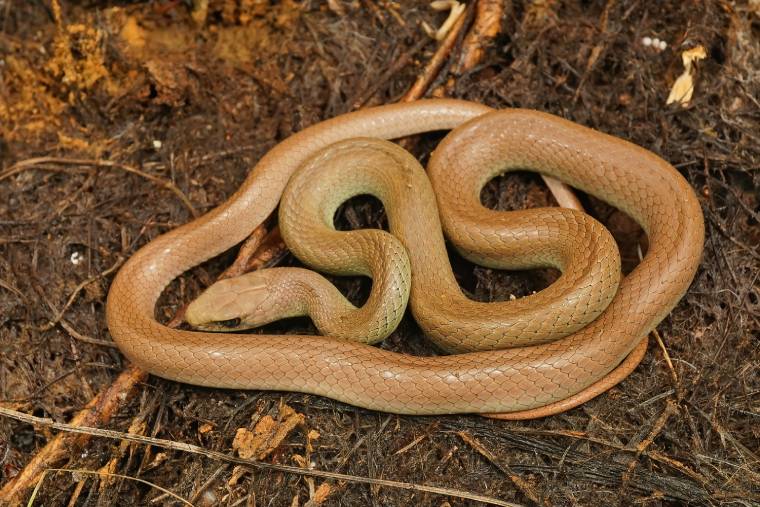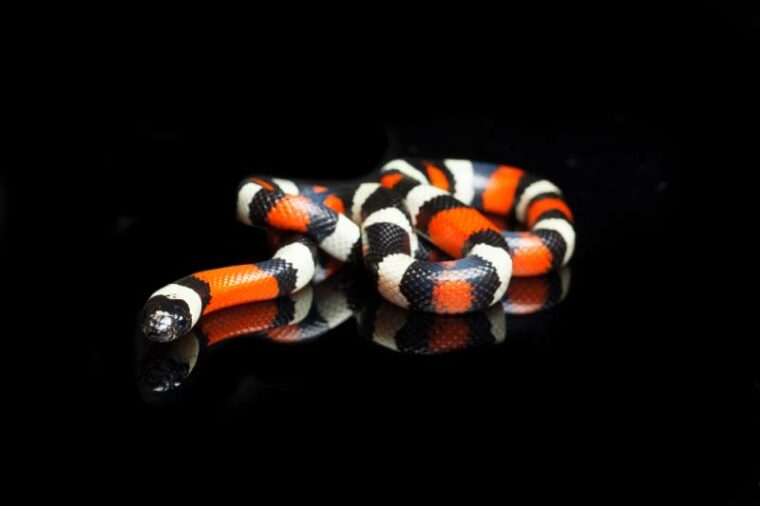
The milk snake is a member of the kingsnake species. This common constrictor is well-known for their vivid colors and beautiful markings. This species of snake, also known as the Lampropeltis triangulum, can easily be found in many parts of both North and South America, including the United States, Mexico, and Colombia.
Known as a carnivore, the milk snake prefers a particular diet in the wild such as common insects, reptiles, birds, and rodents. Under human care, you can feed them frozen mice and rats.
Read on below to learn more about the milk snake, their dietary needs, and the differences between what they eat in the wild vs as pets.
The Milk Snake’s Diet in the Wild

Like most other snakes, the adult milk snake’s diet consists of mostly terrestrial vertebrae. Terrestrial vertebrates are considered small animals with a backbone. Their preference for these types of mammals is one of the main reasons you’ll find milk snakes living in marshes where they can feed on frogs and reptiles, or near farms where rodents are common.
Milk snakes are quite adaptable and can make the most of their environment. No matter the area, they can find small prey to ensure they stay fed.
When in wet areas, milk snakes will enjoy a feast of frogs, lizards, and even fish. Due to their natural ability to survive near the water, these snakes are known to thrive in these areas where other snakes may struggle to survive.
In dry areas, the milk snake will seek out small rodents. Mice, rats, and even voles make a great meal for a milk snake in the wild. In some instances, the milk snake may even decide to eat birds or their eggs.
Young milk snakes, known as hatchlings, depend on mostly invertebrate animals to help them grow. Various types of insects, crickets, slugs, and even earthworms are among the favorites of young milk snakes. Keep in mind, a milk snake is considered a carnivore, therefore, it isn’t uncommon for hatchlings to eat other small snakes, even their own species.
- See Also: Snakes That Give Live Birth Like Mammals
The Hunting Techniques of the Milk Snake
In the wild, milk snakes are very capable hunters. Unlike most snakes who ambush their prey, the milk snake enjoys active hunts. When on the hunt, the milk snake will follow scents, then offer several strikes, ensuring their prey is bitten several times. Once injured, this constrictor will then wrap itself around the animal in question attempting to halt the flow of blood. When the heart stops, the milk snake then swallows their prey whole.
- See Also: Do Snakes Like Being Pet?
The Milk Snake’s Diet as Pets

Please note that many states and jurisdictions may have legislation that prohibits owning, breeding, purchasing, or selling snakes or certain snake species. Always make sure you have permission to legally own an exotic pet before deciding to adopt one. If you are in the US, please refer to state laws before deciding to adopt an exotic pet. Elsewhere, please refer to the relevant laws where you reside.
Capturing wild animals to keep as pets is not advised, as this disrupts local ecosystems. Likewise, releasing exotic wild pets back into the wild is also not advised, as this too can disrupt the balance of local ecosystems.
Snakes are a long-term commitment and are generally not considered safe around children. They are also not compatible with other pets, including cats, dogs, birds, rabbits, and other exotic pets. They are opportunistic hunters who may attempt to strike or constrict anything they perceive as a potential meal, including their handlers.
The milk snake is a popular pet among snake enthusiasts. Their bright coloring, easy care, and calm nature make them a great option for new pet owners or those with years of snake care under their belt.
When caring for a milk snake, you may find it easier to feed them what is available instead of what they would commonly eat in the wild. In most cases, this consists of frozen rats and mice. If not already on hand, these common meals can be ordered at your local pet store to ensure your snake gets the nutrition they need.
Feeding Your Milk Snake
The size of your milk snake’s meal depends on the size of your snake. If you are feeding an adult snake, large meals are good, but avoid going too large. When choosing the perfect meal, keep the largest size of your snake’s body in mind (usually their head). If the prey offered is bigger than the largest part of your snake’s body, digestion issues may occur.
Digestion is a slow process for most snakes and oversized meals can only prolong things and make it uncomfortable for your pet.
Another important consideration to keep in mind when feeding a pet milk snake is age. Younger milk snakes should be fed more often (every 2-3 days). This will help them get the needed requirements to grow properly. Adults should be fed once per 5-7 days.
When feeding a hatchling, go with a smaller, completely defrosted mouse. This will be an easily digested-meal to keep your new pet happy. Closely monitor your hatchling, especially if you are new to the world of snake ownership. Please note that newborn snakes don’t actively eat until they are about 2 weeks old and use this time to instinctively seek a hiding place away from other predators (including larger milk snakes).
Adult snakes can eat larger meals to sustain them longer. Choosing to feed an adult snake every 2 weeks is a great way to ensure they meet their dietary requirements. If you choose larger-sized rats, only offer those properly proportioned for your particular snake. Oversized meals, no matter a snake’s age, can cause regurgitation.
With the docile nature of the milk snake, bites during feeding aren’t something you should fear. To ensure your snake doesn’t bite, simply follow the proper care techniques.
Following these care techniques when feeding will help you avoid bites. It is also important that your milk snake does not associate seeing your hand with feeding time. For this reason, a feeding device is recommended.
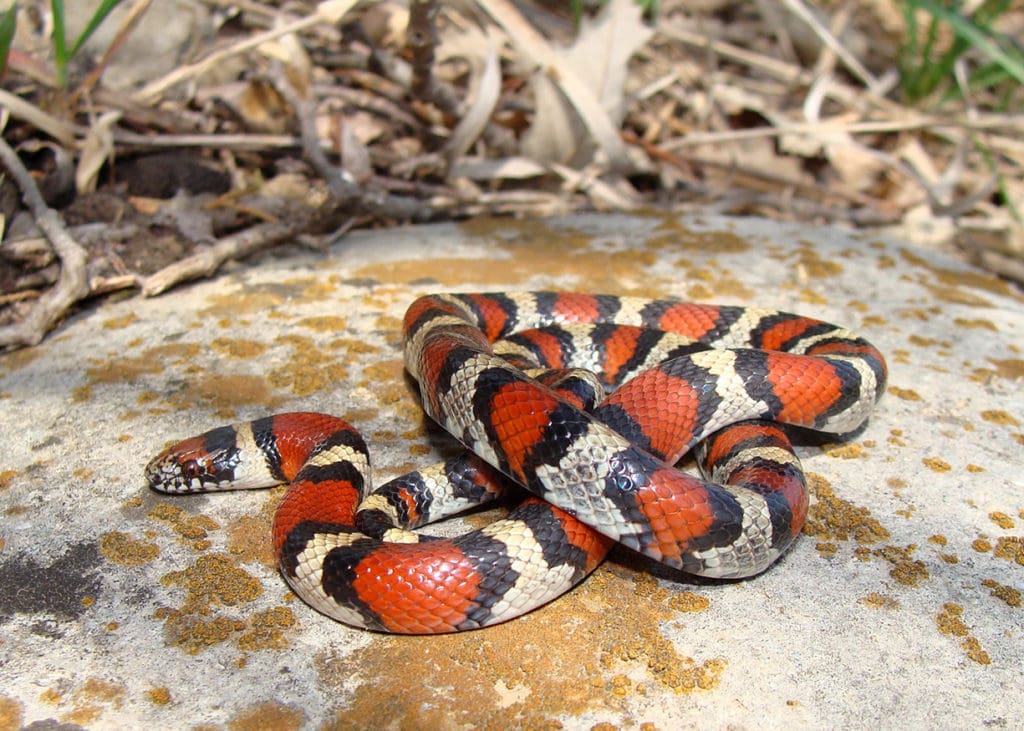
Do Milk Snakes Make Good Pets?
You may be asking yourself if the milk snake makes a great pet. The answer to that question depends on your expectations from a pet. The milk snake has a gentle disposition and is available in a variety of colors. In addition, they are not venomous to humans. They’re also not a noise nuisance.
However, snakes, in general, are not hands-on pets and are not considered pets that appreciate frequent handling in general. They’re usually kept for observation purposes only, and interaction with pet snakes is usually kept to a minimum. Therefore, they aren’t considered the best pets for children or those who seek more interaction with their pets.
- Related Read: Types of Milk Snakes That Make Great Pets
Conclusion
As you can see, there is quite a difference in the eating habits of pet milk snakes and those surviving in the wild. If you choose to have a milk snake as a pet, it is important to keep these differences in mind. Yes, your snake is a natural-born hunter, but life in an enclosure may make it more difficult to stalk and interact with their prey. Keep your snake fed properly, and on schedule, to help your milk snake prosper just as it would in its natural habitat.
Featured Image Credit: dwi putra stock, Shutterstock


